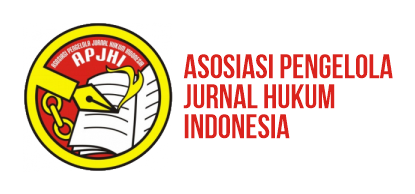Author Guidelines
Jurnal Konstitusi is a quarterly publication that aims to disseminate research and conceptual studies on the constitution and decisions of the Constitutional Court. It is published four times yearly (in March, June, September, and December). It features articles on various topics related to constitutional law, including disseminating research results or conceptual studies on constitutions, constitutional court decisions worldwide, and issues on constitutional law. The journal is intended for experts, academics, researchers, practitioners, state officials, non-governmental organizations, and observers of constitutional law. To ensure the originality of the manuscripts, we are concerned about plagiarism issues, and the articles should not be published elsewhere. Additionally, submitted manuscripts must be written in either Bahasa or English. Authors who are not native speakers of English should have their articles proofread by a native speaker before submitting them to The Editorial of Jurnal Konstitusi.
The editorial team will only accept a manuscript that meets the specified formatting requirements (downloadable at: Template and Author Guidelines). This template is designed to assist authors in preparing manuscripts; it is an exact representation of the format expected by the editor. To use this template, please just Save As this MS Word file to your document, then copy and paste your document here.
Article Format
The manuscript guidelines for the Journal of Konstitusi require articles to be within the range of 4000-8000 words, which includes footnotes and an abstract. The recommended order for the manuscript is as follows: Title, Abstract, Keywords, Introduction (Background, Problem Formulation, and Research Methods), Discussion, Conclusion, and Bibliography. Additionally, citations must follow the Chicago Manual of Style 17th edition (full note) citation style.
Title
The title of the article is written in Georgian font (19 pt size) and should not exceed 12 words.
Author Name and Affiliation
Author names are written in Verdana font (11 pt size), while affiliations are written in Verdana font (9 pt size).
Abstract
The abstract should be clear, concise, and descriptive. This abstract should provide a brief introduction to the problem, the purpose of the article, followed by a statement regarding the methods and a brief summary of the results. The font used is Cambria (10 pt size) and no more than 150 words.
Keywords
Keywords are organized alphabetically and should have at least two keywords and a maximum of five keywords separated by semicolons (;).
Introduction
The introduction should be clear and provide an overview of the issues to be addressed in the manuscript. At the end of the paragraph, the author should comment on the significance of the problem identification and research objectives. In this section, the font used is Cambria (12Pt) with 1.5 spaces. The introduction contains sub-chapters including:
- Background
Background contains a description of the background of the problem to be studied, describes previous research, and displays the novelty of previous research.
- Problem Formulation
This section contains the formulation of the problem in the form of questions or paragraphs. This problem formulation then becomes a line of thought that will be discussed in the next section.
- Research Methods
This section describes the research methods used in the research conducted by the author. Research methods include analysis techniques, data collection techniques, and references used.
Discussion
This section describes the research results and discussion based on the analysis method used. The description of the discussion must be adjusted to the sequence of legal issues that are the main elements in the study. Theories included in the theoretical framework must be cited in this chapter. In this section, the font used is Cambria (12Pt) with 1.5 spaces. The writing can be made in subtitle format based on the issues discussed.
Conclusion
The conclusion contains a description that must answer the research objectives. Do not repeat the Abstract or only explain the research results. Provide a clear explanation of the application and/or suggestions related to the research findings. In this section, the font used is Cambria (12Pt) with 1.5 spaces.
Reference
For manuscripts published starting in 2022, Jurnal Konstitusi uses the Chicago Manual of Style 17th edition (full note) in the References at the end of the manuscript. Mention only the items you read and write in footnotes. Please use a Reference Manager Application such as EndNote, Mendeley, Zotero, etc. Use articles that have been published in the Jurnal Konstitusi throughout the 2022 Edition as examples. All publications cited in the text should be included in the References section and organized alphabetically. References that can be referred to are all publications in the last 10 (ten) years, except for unique references that have never been reissued. The reference list must be 80% of national and international journals, thesis, dissertation, and proceedings; 20% of Bibliographies come from books or anything else except Wikipedia and personal blogs. A quick guide to citation can be found at: https://www.chicagomanualofstyle.org/tools_citationguide/citation-guide-1.html
Figures and Tables
The figures should be readable and at least have a resolution of 300 DPI (Dots Per Inch) for good printing quality. Table made with the open model (without the vertical lines)
Main Headings of Article
- Following main headings should be provided in the article while preparing. Main headings, sub-headings and sub-sub headings should be numbered in the article with the following example:
A ._____________________________________________________________
1 .__________________________________________________________
a ._____________________________________________________
1) .________________________________________________
a) .____________________________________________
(1) ._______________________________________
(a) .________________________________
















